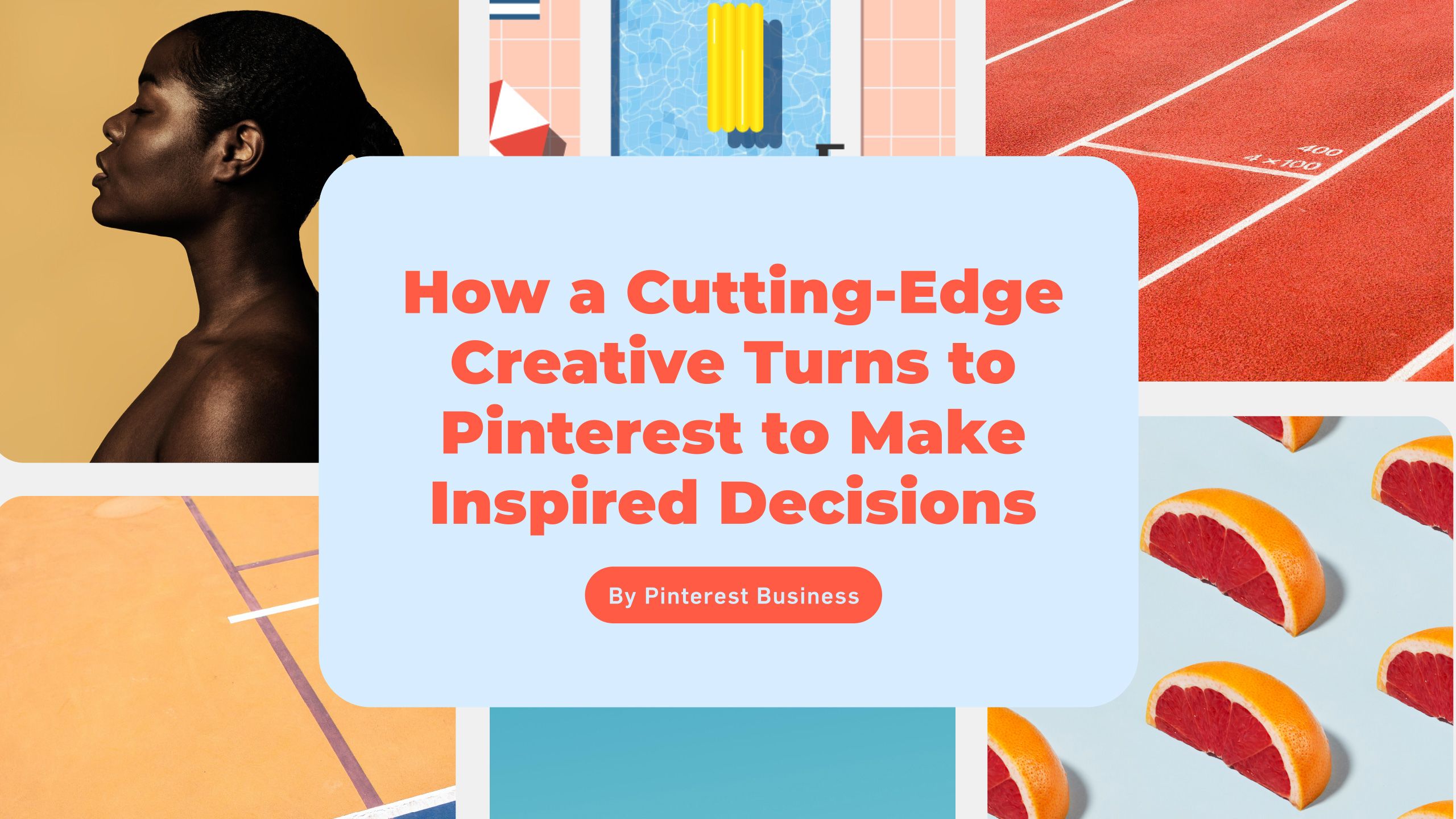
The origins of inspiration
When Mara Lecocq, creative powerhouse and current brand director at professional networking app Fishbowl, was a design student, she would buy one $50 art book to serve as her guide and inspiration for the entire year. That world is no more. The explosion of visual expression on social and digital media has, to put it lightly, rocked her creative world.
She’s not alone. Consumers today are inherently visual, relying on color schemes, landscapes and graphics to make decisions about what to buy and who they want to be. Long gone is the power of the two-line jingle. Visuals have become the way stories—brand or otherwise—are told and remembered.
As Lecocq, a Cannes Lions winner, puts it: ”The internet has made the world an overwhelmingly more tasteful place.”
So how can you take advantage of this wealth of expression for inspiration, creative planning and brand storytelling? It takes a platform like Pinterest.
A self-described Pinterest OG, Lecocq turns to the platform as a jumping off point and creative touchstone in her professional and personal lives. For her, Pinterest is an endless bank of inspiration that she can turn to for everything from short haircut ideas to typography elements to integrate into one of her side projects like Where Are the Boss Ladies, a database of senior women leaders in advertising.
So, how can you—the creative trailblazer—leverage the visual discovery platform to get next-level inspiration and engage with consumers in a fresh, visually forward way? Whether you are just starting out with visual-first expression or you are a seasoned pro, these are the four essential elements of inspiration you need to know.
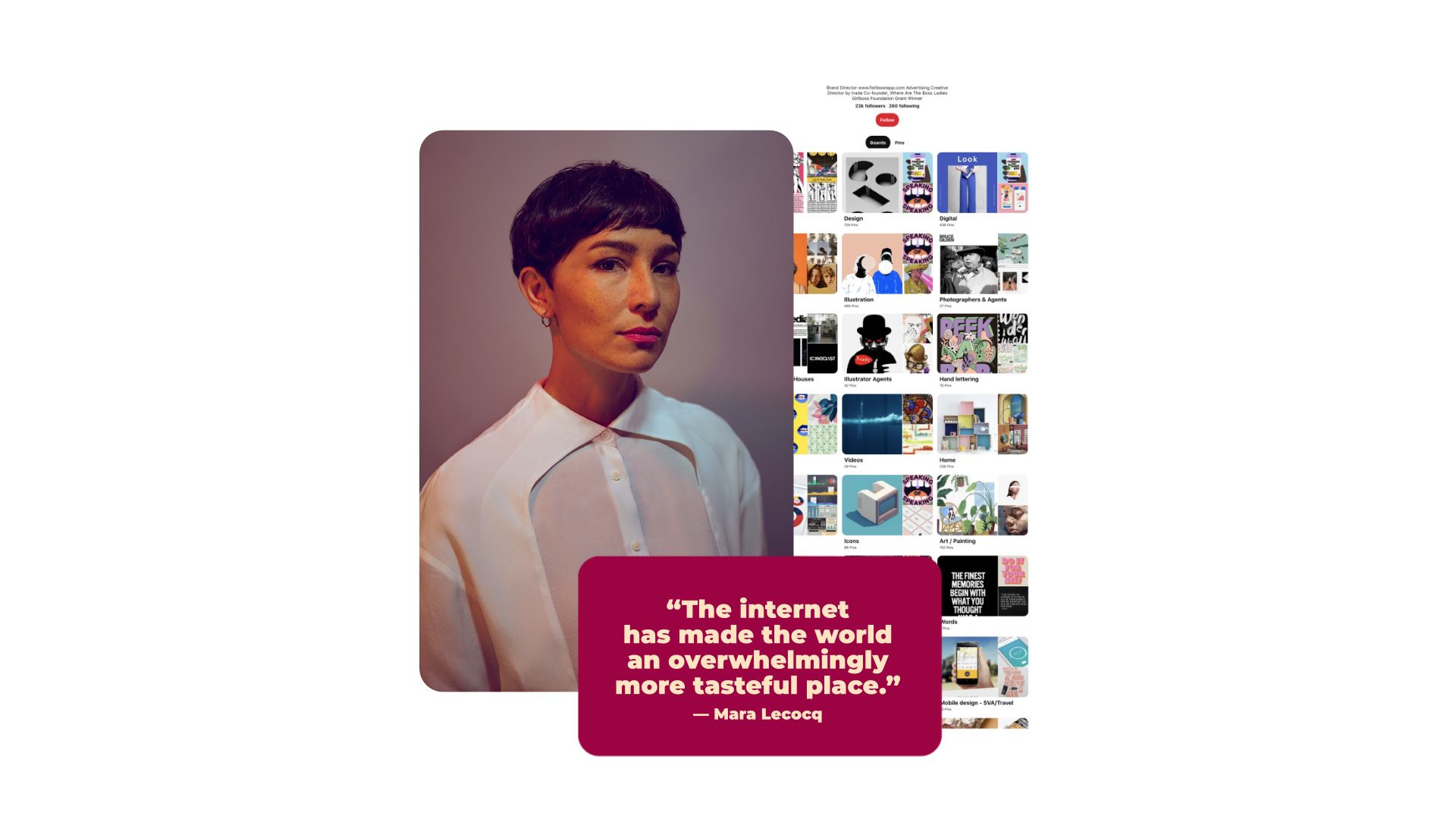
The origins of inspiration
When Mara Lecocq, creative powerhouse and current brand director at professional networking app Fishbowl, was a design student, she would buy one $50 art book to serve as her guide and inspiration for the entire year. That world is no more. The explosion of visual expression on social and digital media has, to put it lightly, rocked her creative world.
She’s not alone. Consumers today are inherently visual, relying on color schemes, landscapes and graphics to make decisions about what to buy and who they want to be. Long gone is the power of the two-line jingle. Visuals have become the way stories—brand or otherwise—are told and remembered.
As Lecocq, a Cannes Lions winner, puts it: ”The internet has made the world an overwhelmingly more tasteful place.”
So how can you take advantage of this wealth of expression for inspiration, creative planning and brand storytelling? It takes a platform like Pinterest.
A self-described Pinterest OG, Lecocq turns to the platform as a jumping off point and creative touchstone in her professional and personal lives. For her, Pinterest is an endless bank of inspiration that she can turn to for everything from short haircut ideas to typography elements to integrate into one of her side projects like Where Are the Boss Ladies, a database of senior women leaders in advertising.
So, how can you—the creative trailblazer—leverage the visual discovery platform to get next-level inspiration and engage with consumers in a fresh, visually forward way? Whether you are just starting out with visual-first expression or you are a seasoned pro, these are the four essential elements of inspiration you need to know.

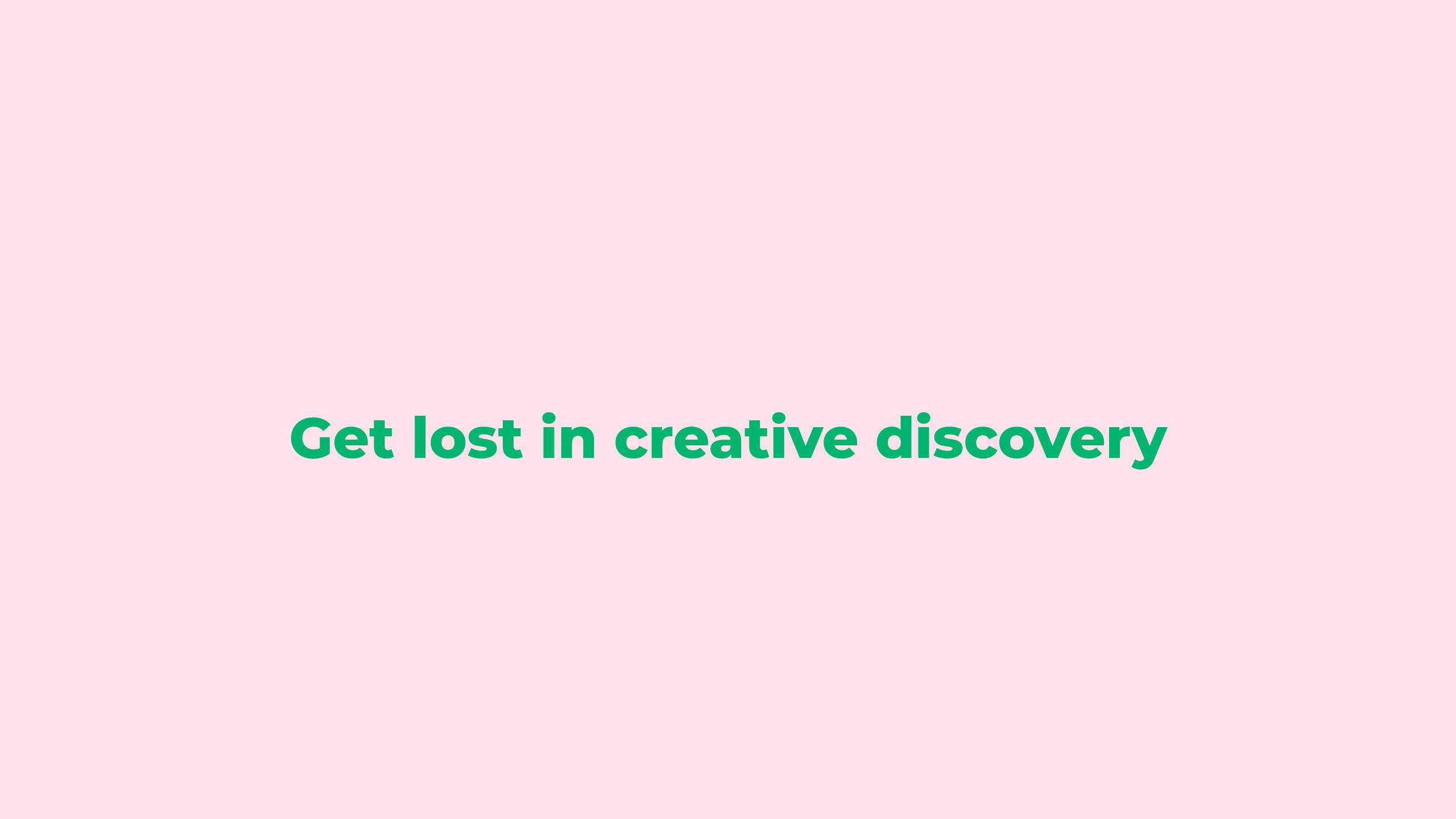
Half the battle of any project is finding that one thing that can launch you into creative and design go-mode. Lecocq’s go-to source is the Pinterest boards she’s been curating for years.
“I look at my existing boards to see what could work for a brand campaign, and then I let myself get lost in wormholes of content the platform surfaces,” she admits.
Getting lost in discovery is critical to her creative process. One idea or visual quickly leads to another and Lecocq soon finds herself discovering those unexpected moments that play into what she’s seeking.
Her second approach to discovery is keyword searching. This is as simple as it sounds—by typing in succinct keywords related to the topic or theme she is interested in, she’s able to turn up boards and Pins she might not have found otherwise.
Inspiration isn’t magic. It is a byproduct of organization. “I have boards for every medium I use,” Lecocq explains. “For example, I have an overall design board, but then I also have photography, typography, illustration and digital UI.”
By breaking down what could quickly become overwhelming, she is able to instantly look back and reference specific elements that have aroused her curiosity and creativity. She can then pull multiple inspirations together to create a cohesive idea.
Consumers use similar methods to find inspiration. Your brand story on Pinterest needs strong, bold imagery to grab their attention. Invest in high-quality visuals that allow your brand to be front and center without obfuscating the creative theme. When your consumer is in the discovery phase, these high-octane visuals are more likely to grab and keep their attention.
If, like Lecocq, your audience is using keywords to surface content, your Pin's title should contain the most essential information. For example, if you are promoting a vegan sausage breakfast sandwich recipe, your brand's product or top ingredients should be featured in the Pin title. This will help give context to your content and help the platform surface it to the right people. Also, in your description, be sure to use clear language, incorporating generic but relevant keywords.
Take Action
Early on in the inspiration process, it really is all about organization. Take a cue from Lecocq and decide on a schematic or system to organize by. For example, group by medium, project or type of content. With a solid system in place, you’ll be better positioned to pull from different boards to make a cohesive whole.
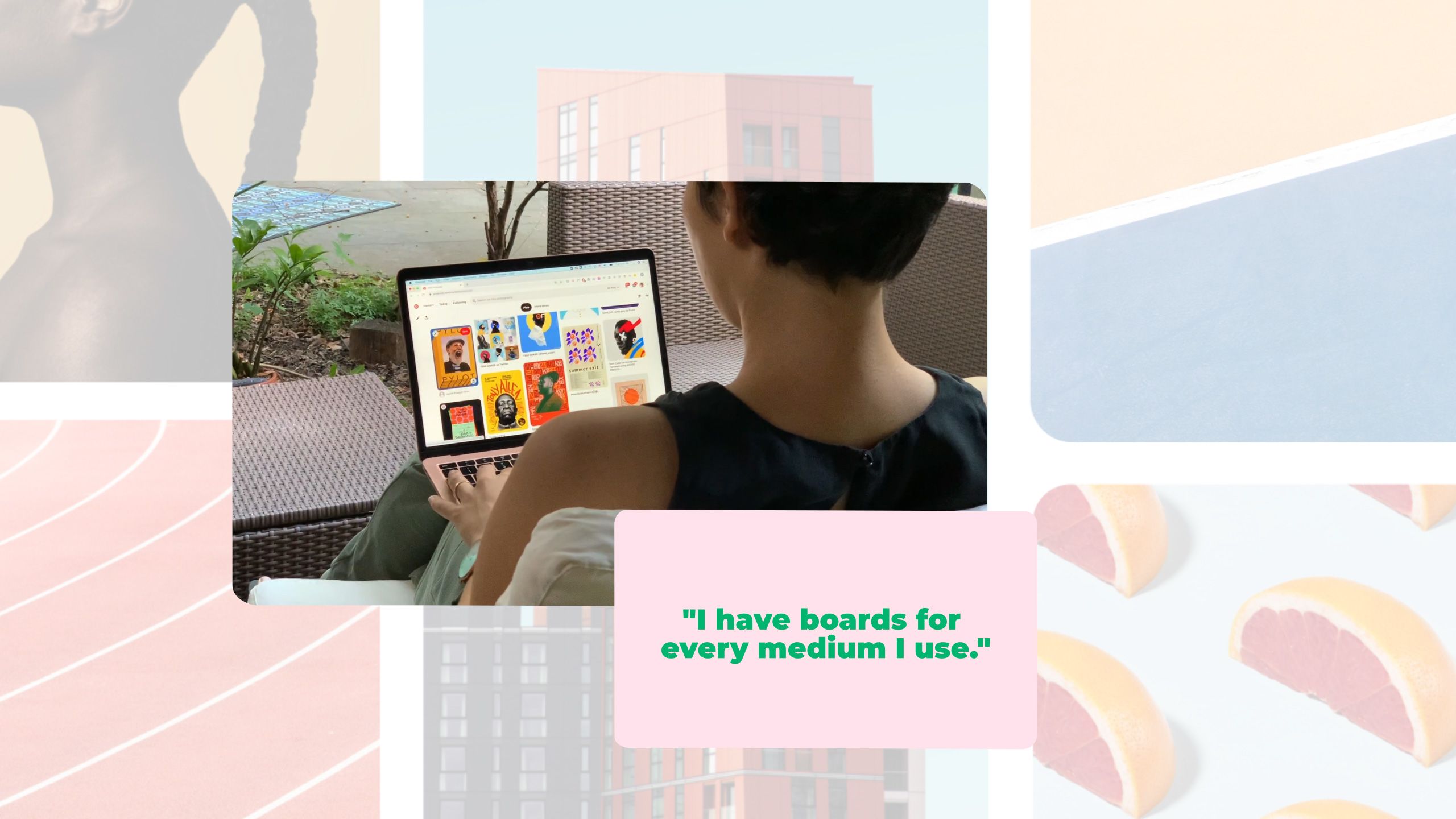
Half the battle of any project is finding that one thing that can launch you into creative and design go-mode. Lecocq’s go-to source is the Pinterest boards she’s been curating for years.
“I look at my existing boards to see what could work for a brand campaign, and then I let myself get lost in wormholes of content the platform surfaces,” she admits.
Getting lost in discovery is critical to her creative process. One idea or visual quickly leads to another and Lecocq soon finds herself discovering those unexpected moments that play into what she’s seeking.
Her second approach to discovery is keyword searching. This is as simple as it sounds—by typing in succinct keywords related to the topic or theme she is interested in, she’s able to turn up boards and Pins she might not have found otherwise.
Inspiration isn’t magic. It is a byproduct of organization. “I have boards for every medium I use,” Lecocq explains. “For example, I have an overall design board, but then I also have photography, typography, illustration and digital UI.”
By breaking down what could quickly become overwhelming, she is able to instantly look back and reference specific elements that have aroused her curiosity and creativity. She can then pull multiple inspirations together to create a cohesive idea.
Consumers use similar methods to find inspiration. Your brand story on Pinterest needs strong, bold imagery to grab their attention. Invest in high-quality visuals that allow your brand to be front and center without obfuscating the creative theme. When your consumer is in the discovery phase, these high-octane visuals are more likely to grab and keep their attention.
If, like Lecocq, your audience is using keywords to surface content, your Pin's title should contain the most essential information. For example, if you are promoting a vegan sausage breakfast sandwich recipe, your brand's product or top ingredients should be featured in the Pin title. This will help give context to your content and help the platform surface it to the right people. Also, in your description, be sure to use clear language, incorporating generic but relevant keywords.
Take Action
Early on in the inspiration process, it really is all about organization. Take a cue from Lecocq and decide on a schematic or system to organize by. For example, group by medium, project or type of content. With a solid system in place, you’ll be better positioned to pull from different boards to make a cohesive whole.

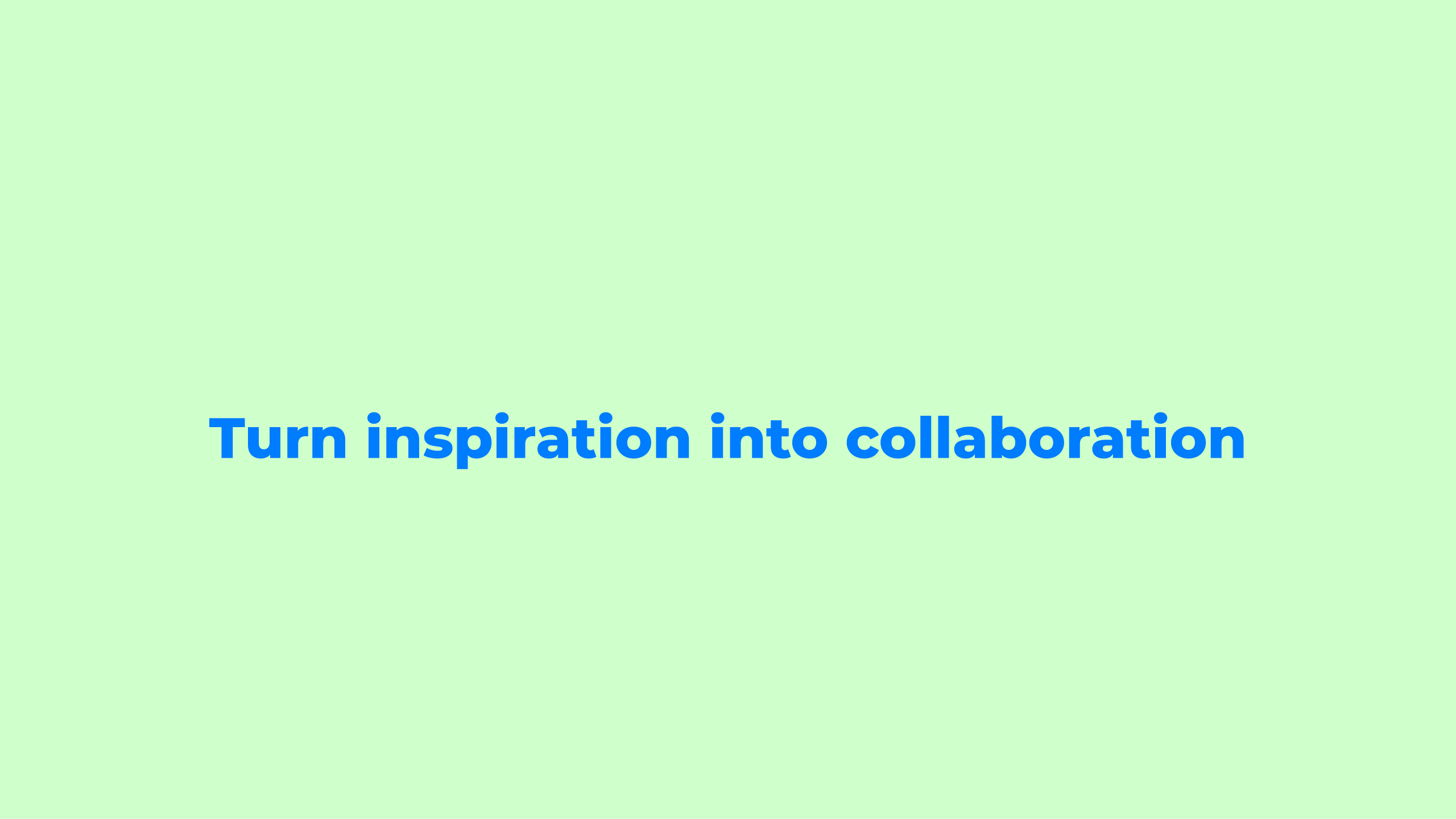
“Being able to work with different people on the same board and get inspired simultaneously is crucial for any collaborative creative process.”
Lecocq knows that inspiration is a team sport, especially when it comes to leading a design team and helping them come up with the necessary breakthrough creativity. When she and her team of three designers at Fishbowl set out to create a new direction, they naturally gravitate towards Pinterest.
Working on a collaborative board, the team independently searches for design elements and then saves them to the group board for evaluation and real-time discussion.
This allows the group to push the boundaries of what branding can mean and to surface design and creative elements they might not have otherwise found. It also allows them to tap into current visual trends and use them to inform their strategy.
For Lecocq, Pinterest becomes critical during two phases of the collaborative creative process.
At the kick-off, Pinterest boards can inspire the creative brief. In fact, she believes starting a brief without any outside inspiration is nonsensical. “When you give inspiration off the bat, it sets the bar high and lessens spinning,” says Lecocq.
Creative collaboration can then return if they hit a creative dead-end. “You always hear creative directors complain and tell their teams to ‘just keep pushing’ without giving any real direction. If you, as a creative director, don’t do the homework and find guiding inspiration, your team won’t be able to do the work."
Instead of falling into this trap, Lecocq will hit the pause button and return to Pinterest to surface ideas to help the team move forward. “It’s really fast. I’ll go back to Pinterest and show them other references. And then in five minutes they are inspired again and ready to go with a second wind.”
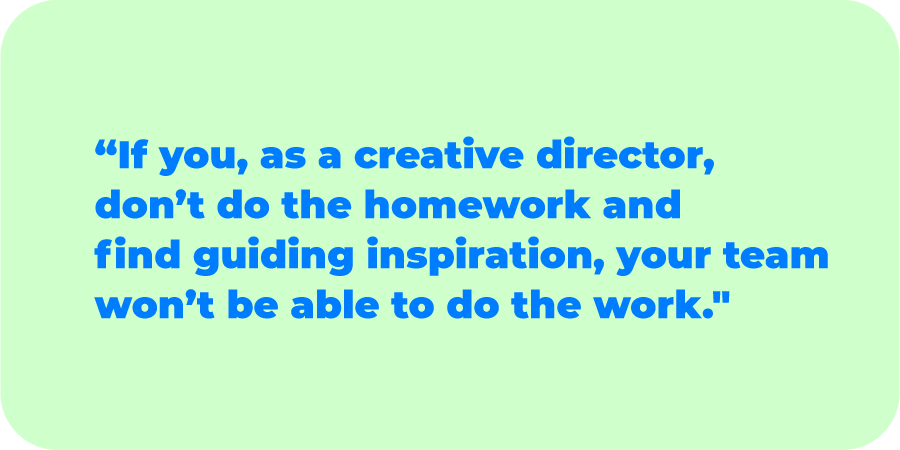
Take Action
A next-level creative execution is only possible if the creatives are inspired. Whether you’re leading a team or not, work to bring in external design inspiration throughout the process. Turn up undecided but ready to discover and look for Pins that are unpredictable or surprising. Then let the platform’s recommendation algorithm lead you into more unexpectedness.
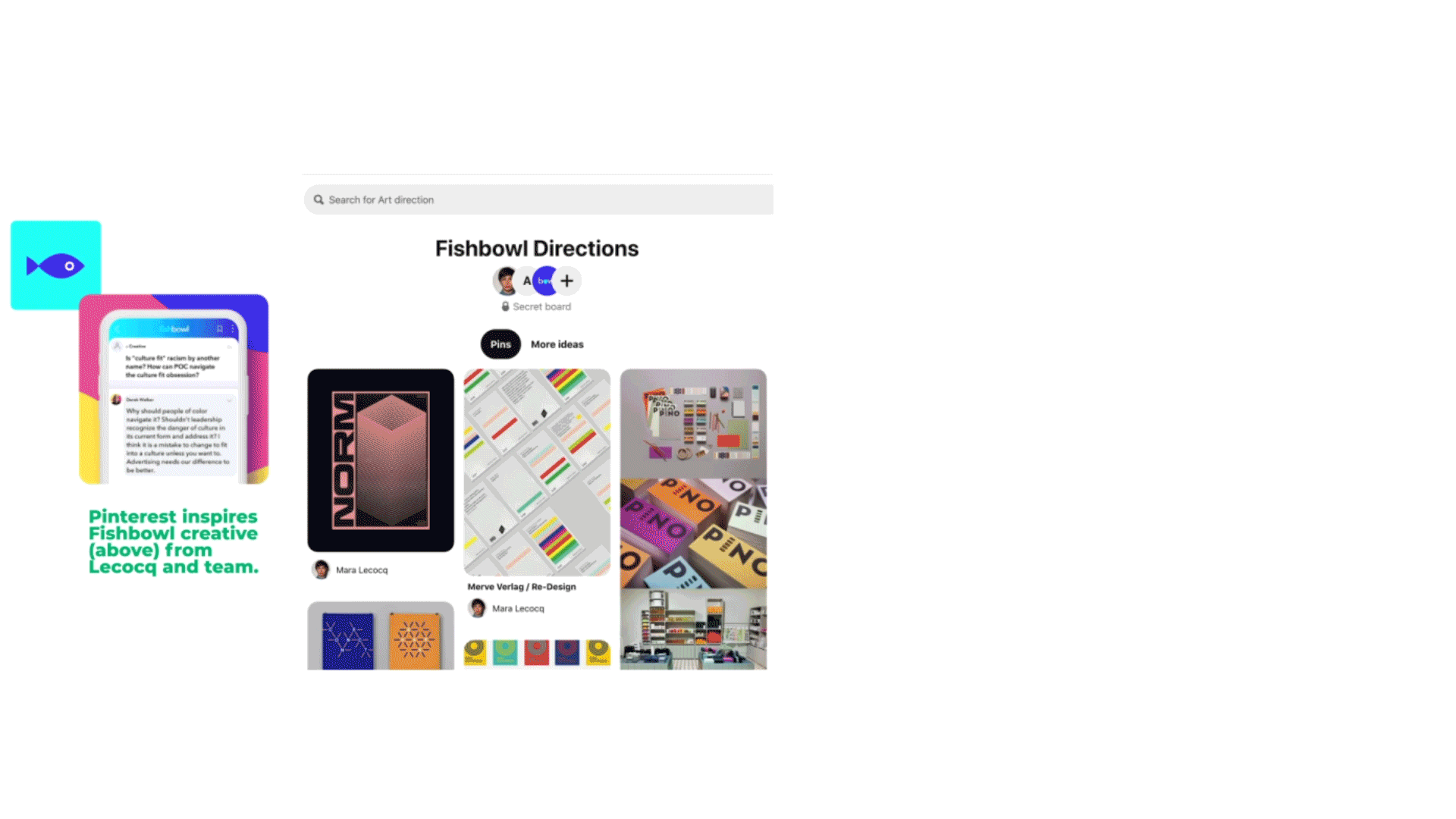
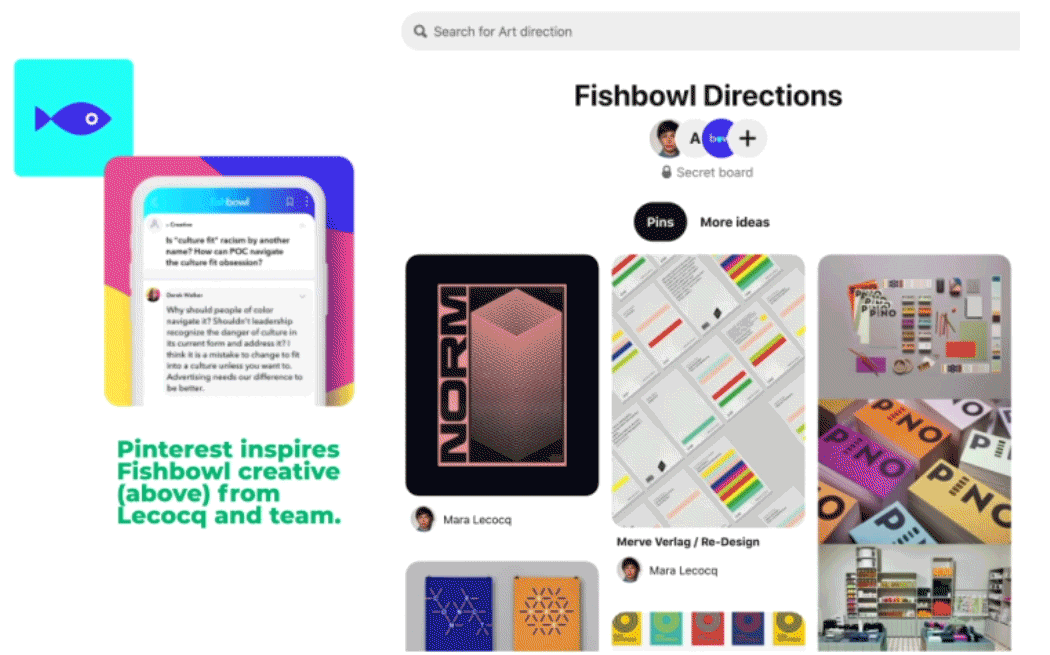
“Being able to work with different people on the same board and get inspired simultaneously is crucial for any collaborative creative process.”
Lecocq knows that inspiration is a team sport, especially when it comes to leading a design team and helping them come up with the necessary breakthrough creativity. When she and her team of three designers at Fishbowl set out to create a new direction, they naturally gravitate towards Pinterest.
Working on a collaborative board, the team independently searches for design elements and then saves them to the group board for evaluation and real-time discussion.
This allows the group to push the boundaries of what branding can mean and to surface design and creative elements they might not have otherwise found. It also allows them to tap into current visual trends and use them to inform their strategy.
For Lecocq, Pinterest becomes critical during two phases of the collaborative creative process.
At the kick-off, Pinterest boards can inspire the creative brief. In fact, she believes starting a brief without any outside inspiration is nonsensical. “When you give inspiration off the bat, it sets the bar high and lessens spinning,” says Lecocq.
Creative collaboration can then return if they hit a creative dead-end. “You always hear creative directors complain and tell their teams to ‘just keep pushing’ without giving any real direction. If you, as a creative director, don’t do the homework and find guiding inspiration, your team won’t be able to do the work."
Instead of falling into this trap, Lecocq will hit the pause button and return to Pinterest to surface ideas to help the team move forward. “It’s really fast. I’ll go back to Pinterest and show them other references. And then in five minutes they are inspired again and ready to go with a second wind.”

Take Action
A next-level creative execution is only possible if the creatives are inspired. Whether you’re leading a team or not, work to bring in external design inspiration throughout the process. Turn up undecided but ready to discover and look for Pins that are unpredictable or surprising. Then let the platform’s recommendation algorithm lead you into more unexpectedness.

Inspiration creates ideas. Planning turns those ideas into reality.
"Every creative needs to make sure the visual execution is on brand and on strategy. Is your brand friendly and welcoming? Or premium with an edge? The design needs to deliver on your brand values while attracting the audience you're targeting. Make it relevant, not trendy,” says Lecocq.
For many creatives, planning is the most exciting time, as they get to take all of the design elements they’ve fallen in love with and turn them into something actionable.
When Lecocq moves into this stage, she shifts from “ideas” to “execution” keeping abreast of what is taking place in the market, how consumer behaviors are changing, or what opportunities (and threats) are out there.
“Being aware of what’s out there but not jumping on the trend bandwagon is critical to building a brand,” Lecocq notes. “Because when you’re like everyone, you don’t stand out and you're memorable to no one—which is the death of your brand."
When it comes to creative execution, be sure you understand your target audience and have a solid idea of what already exists in the marketplace. Ask yourself: What needs are my consumers looking to fill? Are they concrete and immediate or more ephemeral? Why are they on Pinterest in the first place? And, of course, what actions are they likely to take as a result? With these questions answered, you’ll be able to build your content to fill those specific needs and guide the decision-making process.
The second aspect of planning is seasonality. By incorporating seasonal elements your content will feel much more relatable and relevant. For Lecocq, keeping updated on seasonal trends and the design that goes with them is a big reason why she returns to Pinterest.
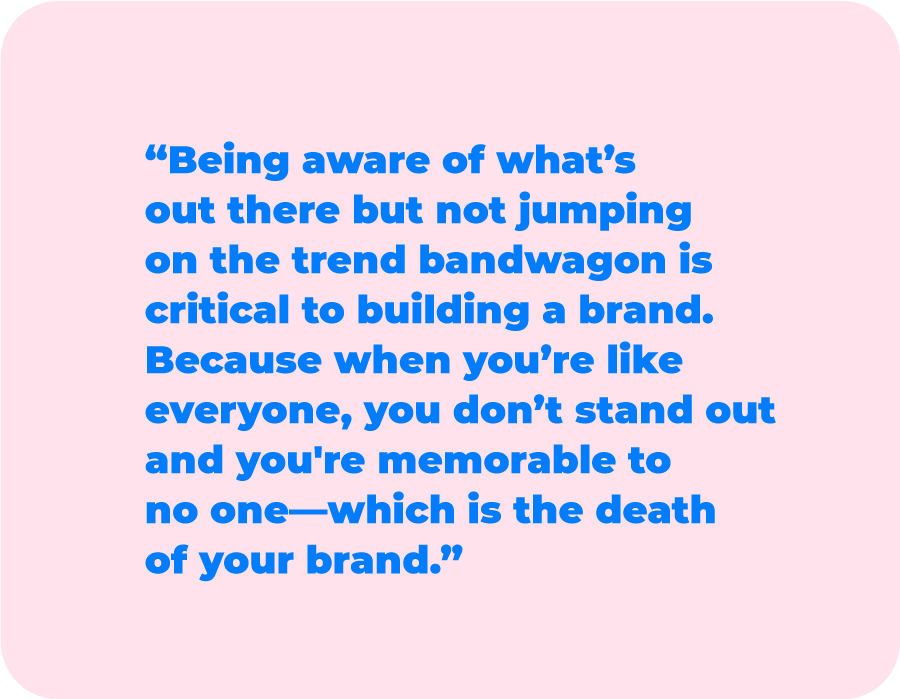
And of course, you can’t talk about seasonality without thinking about the holidays. This year, with Covid-19 keeping many away from their family and friends, creating moments that consumers can connect with, put into action and find joy in, is going to be more crucial than ever.
Consumers right now need something big to look forward to and many are already starting to search for gifts and ways to make the season special. Internal U.S. Pinterest data collected during 2019 and 2020 found that holiday searches on the platform in April 2020 were 77% higher than in April 2019.1 And four in ten Pinners said they want brands to help them bond with loved ones and create special moments with family.2
Moral of the story: The holiday shopping season will be different from now on. Keep in mind that many consumers will be hesitant to browse for presents in stores. Act on this reality by recreating the experience of window shopping virtually in your Pinterest brand stories. Invest in bold, beautiful imagery and videos to help inspire consumers and keep them excited about gift buying and giving.
Take Action
When you’re using inspiration to create Pins, don’t forget about branding opportunities. Use the description to address your consumer’s needs and wants and be sure to mention your brand name. Why? Pinterest research found that Pin descriptions that included a brand name in the first line drove 54% higher conversions.3
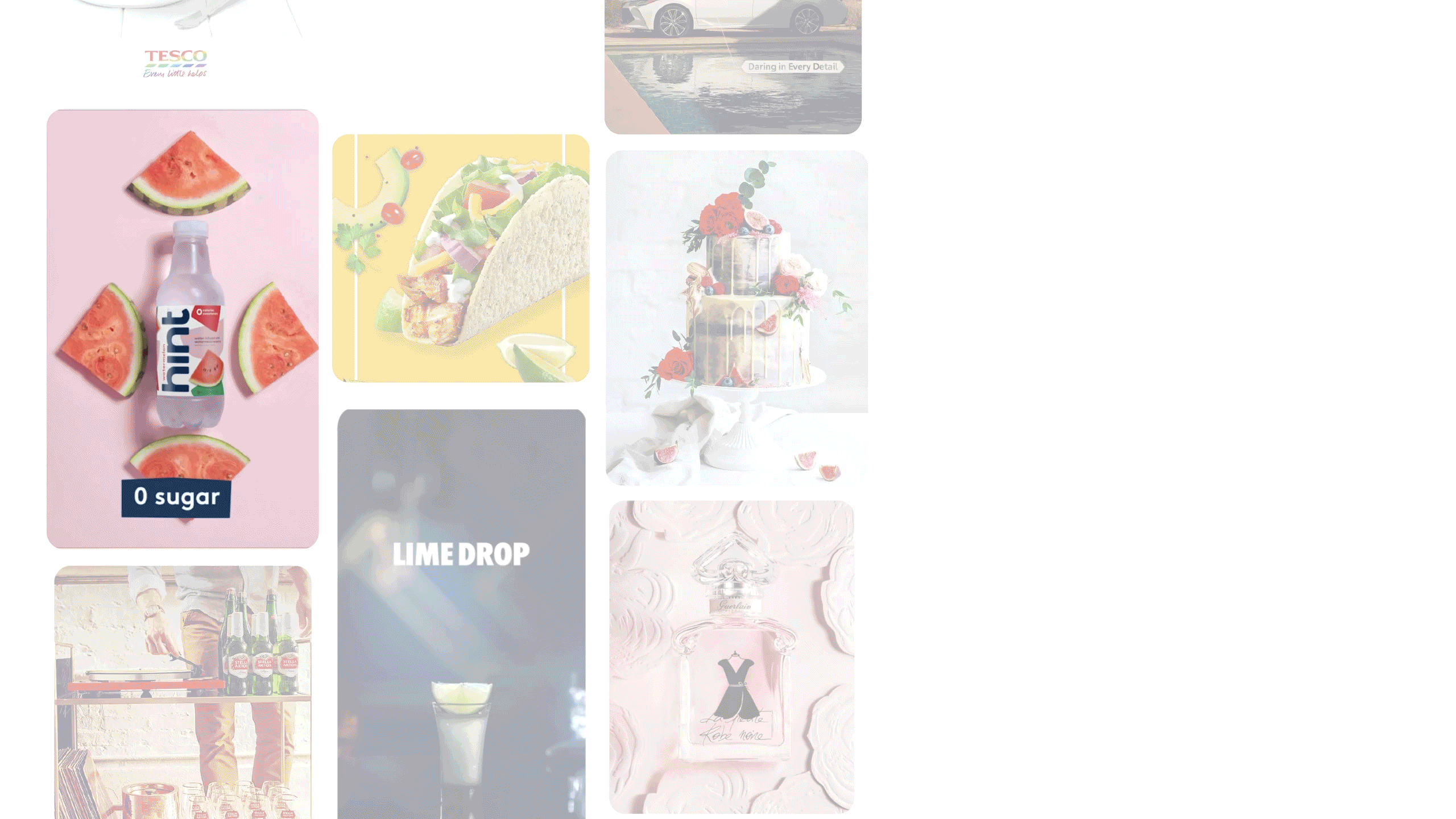
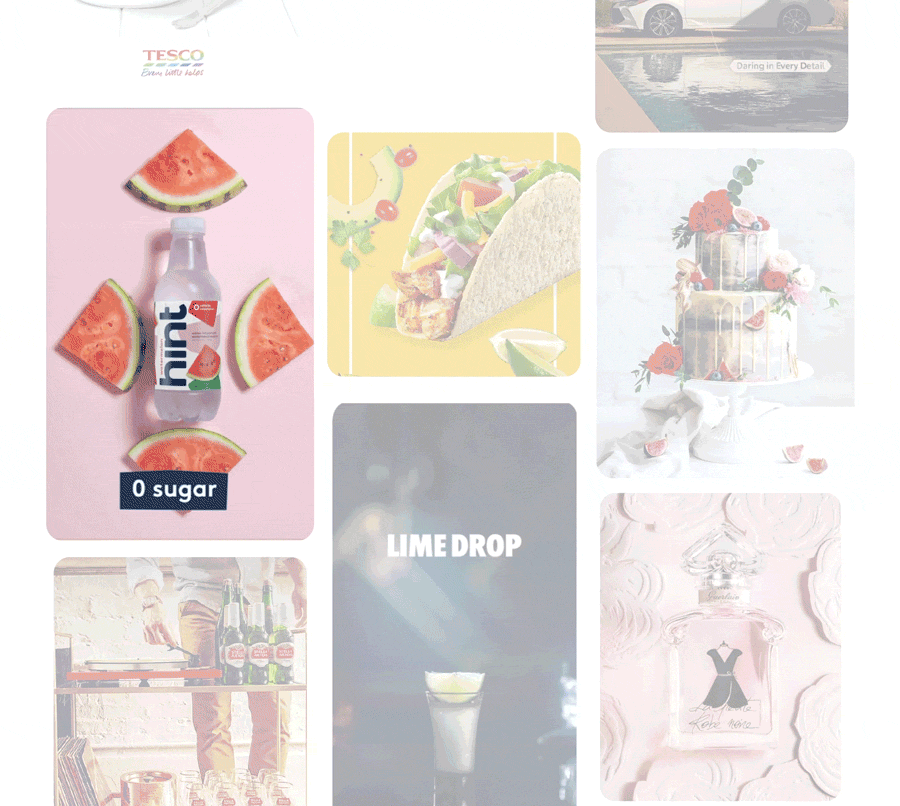
Inspiration creates ideas. Planning turns those ideas into reality.
"Every creative needs to make sure the visual execution is on brand and on strategy. Is your brand friendly and welcoming? Or premium with an edge? The design needs to deliver on your brand values while attracting the audience you're targeting. Make it relevant, not trendy,” says Lecocq.
For many creatives, planning is the most exciting time, as they get to take all of the design elements they’ve fallen in love with and turn them into something actionable.
When Lecocq moves into this stage, she shifts from “ideas” to “execution” keeping abreast of what is taking place in the market, how consumer behaviors are changing, or what opportunities (and threats) are out there.
“Being aware of what’s out there but not jumping on the trend bandwagon is critical to building a brand,” Lecocq notes. “Because when you’re like everyone, you don’t stand out and you're memorable to no one—which is the death of your brand."
When it comes to creative execution, be sure you understand your target audience and have a solid idea of what already exists in the marketplace. Ask yourself: What needs are my consumers looking to fill? Are they concrete and immediate or more ephemeral? Why are they on Pinterest in the first place? And, of course, what actions are they likely to take as a result? With these questions answered, you’ll be able to build your content to fill those specific needs and guide the decision-making process.
The second aspect of planning is seasonality. By incorporating seasonal elements your content will feel much more relatable and relevant. For Lecocq, keeping updated on seasonal trends and the design that goes with them is a big reason why she returns to Pinterest.

And of course, you can’t talk about seasonality without thinking about the holidays. This year, with Covid-19 keeping many away from their family and friends, creating moments that consumers can connect with, put into action and find joy in, is going to be more crucial than ever.
Consumers right now need something big to look forward to and many are already starting to search for gifts and ways to make the season special. Internal U.S. Pinterest data collected during 2019 and 2020 found that holiday searches on the platform in April 2020 were 77% higher than in April 2019.1 And four in ten Pinners said they want brands to help them bond with loved ones and create special moments with family.2
Moral of the story: The holiday shopping season will be different from now on. Keep in mind that many consumers will be hesitant to browse for presents in stores. Act on this reality by recreating the experience of window shopping virtually in your Pinterest brand stories. Invest in bold, beautiful imagery and videos to help inspire consumers and keep them excited about gift buying and giving.
Take Action
When you’re using inspiration to create Pins, don’t forget about branding opportunities. Use the description to address your consumer’s needs and wants and be sure to mention your brand name. Why? Pinterest research found that Pin descriptions that included a brand name in the first line drove 54% higher conversions.3
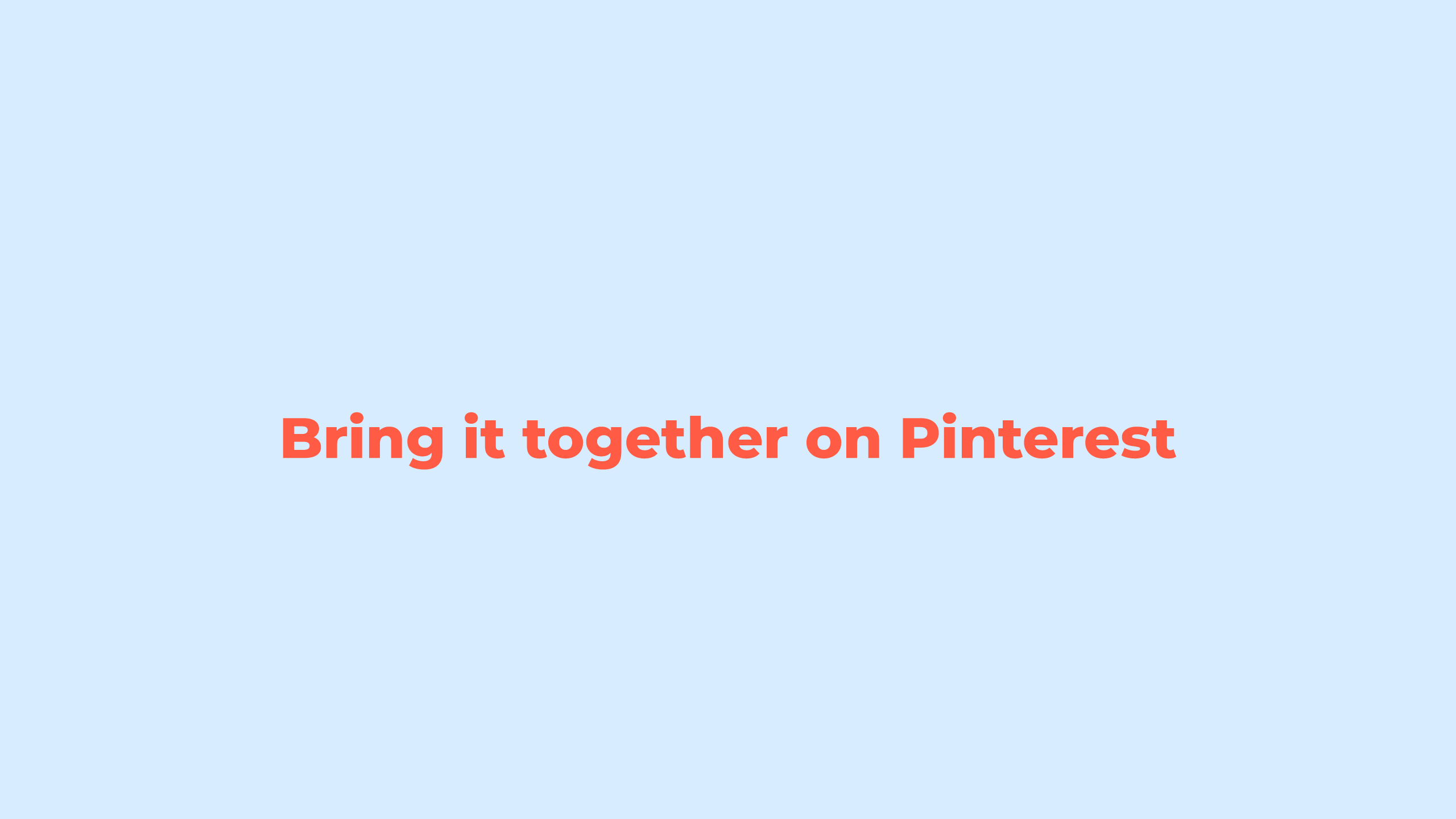
“Pinterest is what inspiration is all about,” Lecocq says. “It’s bringing different influences together and then adding your own flavor to create something new.”
All of her searching and finding and planning is about pushing her vision, becoming more informed and bettering her craft. By going down her “wormholes,” she is able to be constantly inspired and find new, fresh ideas for everything in her professional and personal lives.
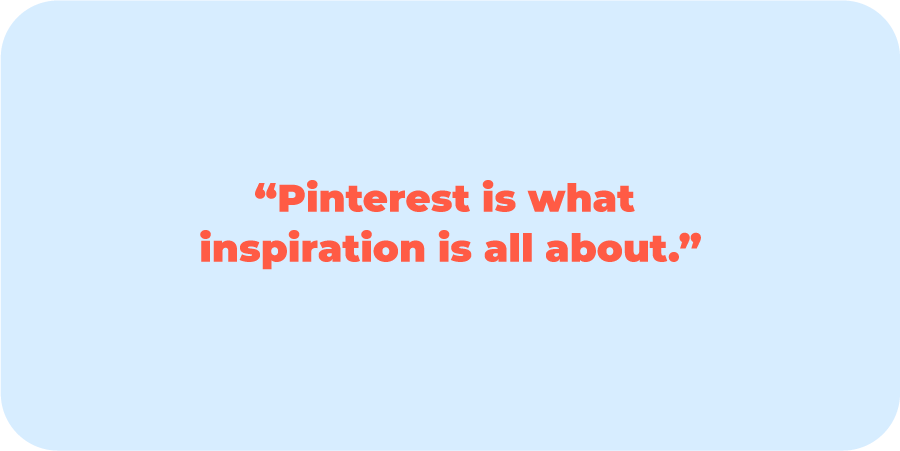
When creating for consumers, adapt this kind of positive and inspired mindset.
These five dimensions complement existing best practices so you can make content that inspires and performs.

What is the Pinner trying to achieve and how is your content helping them reach that goal? Even if it’s just the awareness stage, any content you post should have a clear call to action.

Think outside the box when it comes to graphics and videos. This will require you to explore wormhole-style like Lecocq and make an inventory of what’s already out there and how it inspires you. You’re not out to copy, but to get stimulated and creative.

Especially right now, creating content that inspires through hopeful, joyful messaging and creative is key to helping Pinners visualize the better days ahead (with your product in hand).

Relevance means creating content that connects to special micro-moments—things like Friendsgiving or New Year’s Day brunch or ideas that are additive to today’s reality (like virtual happy hour cocktail ideas or funky fresh mask patterns).

Remember the eye-catching visuals. Consumers are more visual than anything these days, so incorporating big, bold graphics and photography is critical for capturing attention.
Take Action
Pinners come to Pinterest to discover and your brand story can help move them toward conversion. They may be undecided, but they have intention and an open mind towards action. Help guide their journey by creating content that taps into the five dimensions of inspiration. As a rule of thumb, your content should include at least two of the five dimensions, and should always remain authentic to your brand voice.
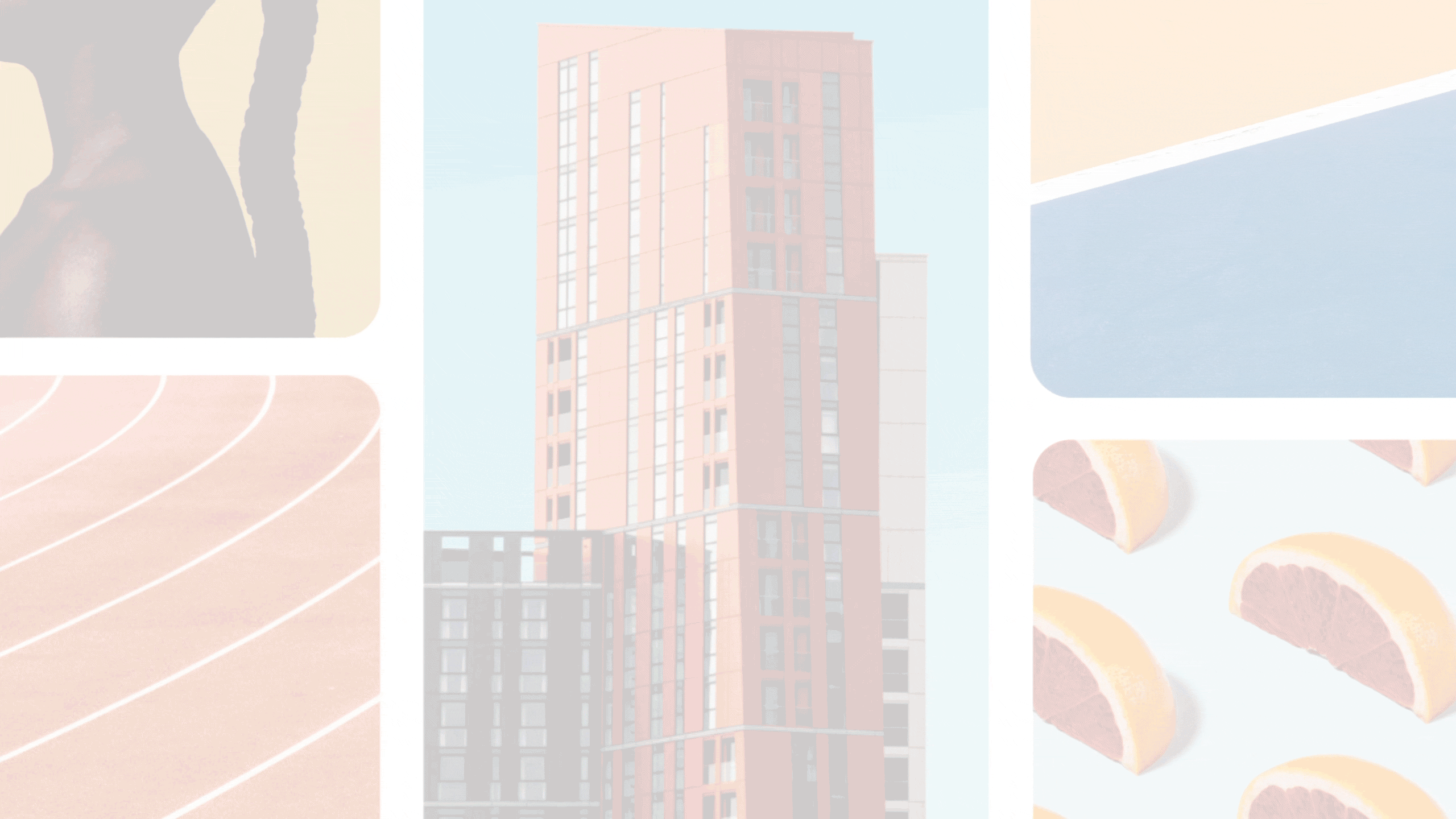
“Pinterest is what inspiration is all about,” Lecocq says. “It’s bringing different influences together and then adding your own flavor to create something new.”
All of her searching and finding and planning is about pushing her vision, becoming more informed and bettering her craft. By going down her “wormholes,” she is able to be constantly inspired and find new, fresh ideas for everything in her professional and personal lives.

When creating for consumers, adapt this kind of positive and inspired mindset.
These five dimensions complement existing best practices so you can make content that inspires and performs.

What is the Pinner trying to achieve and how is your content helping them reach that goal? Even if it’s just the awareness stage, any content you post should have a clear call to action.

Think outside the box when it comes to graphics and videos. This will require you to explore wormhole-style like Lecocq and make an inventory of what’s already out there and how it inspires you. You’re not out to copy, but to get stimulated and creative.

Especially right now, creating content that inspires through hopeful, joyful messaging and creative is key to helping Pinners visualize the better days ahead (with your product in hand).

Relevance means creating content that connects to special micro-moments—things like Friendsgiving or New Year’s Day brunch or ideas that are additive to today’s reality (like virtual happy hour cocktail ideas or funky fresh mask patterns).

Remember the eye-catching visuals. Consumers are more visual than anything these days, so incorporating big, bold graphics and photography is critical for capturing attention.
Take Action
Pinners come to Pinterest to discover and your brand story can help move them toward conversion. They may be undecided, but they have intention and an open mind towards action. Help guide their journey by creating content that taps into the five dimensions of inspiration. As a rule of thumb, your content should include at least two of the five dimensions, and should always remain authentic to your brand voice.
Inspired decisions start here
So, whether you are searching and creating for yourself, for your brand or for a client, start with a platform like Pinterest that puts creative front and center. Start by visiting the Creative Strategy at Pinterest profile to see how to put creativity at the heart of the relationship between people and advertisers.

1 Pinterest Internal Data, April 2019 vs 2020, U.S.
2 Pinterest Internal Data, Anket In- App Survey, Countries surveyed: U.S., CA, DE, FR, AU, U.K.
3 Pinterest, OCL creative meta analysis, May 2018



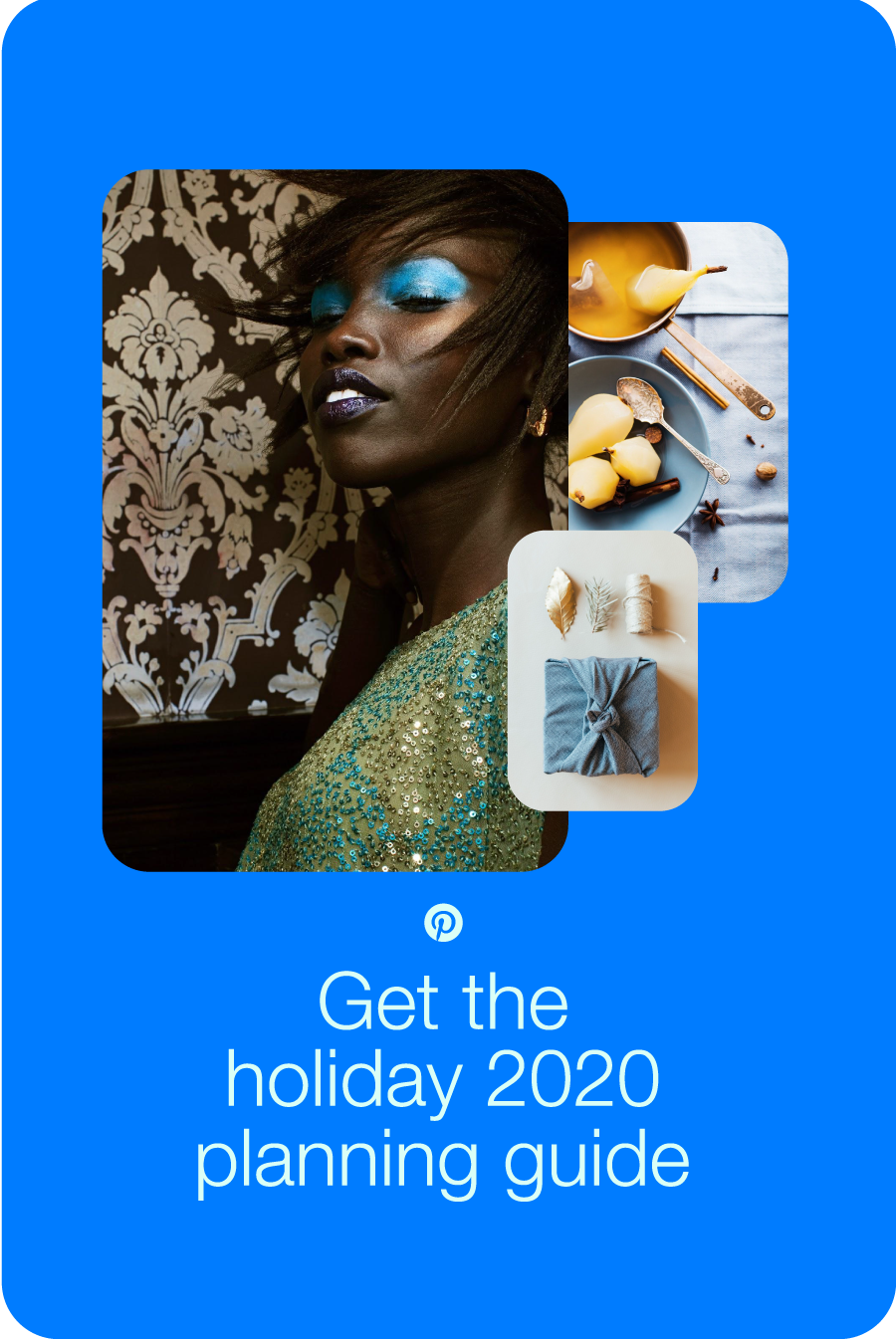

 Built with Shorthand
Built with Shorthand





